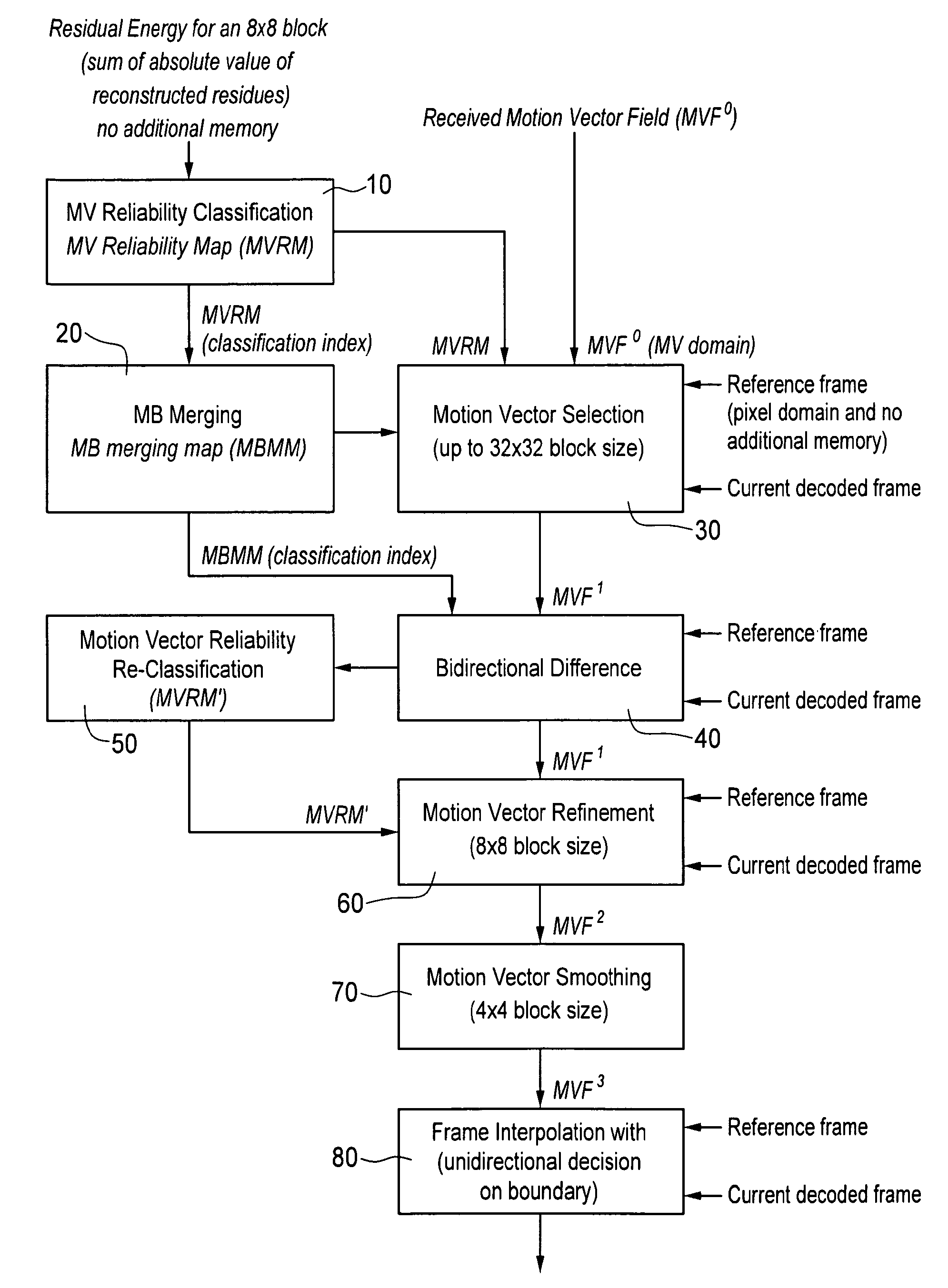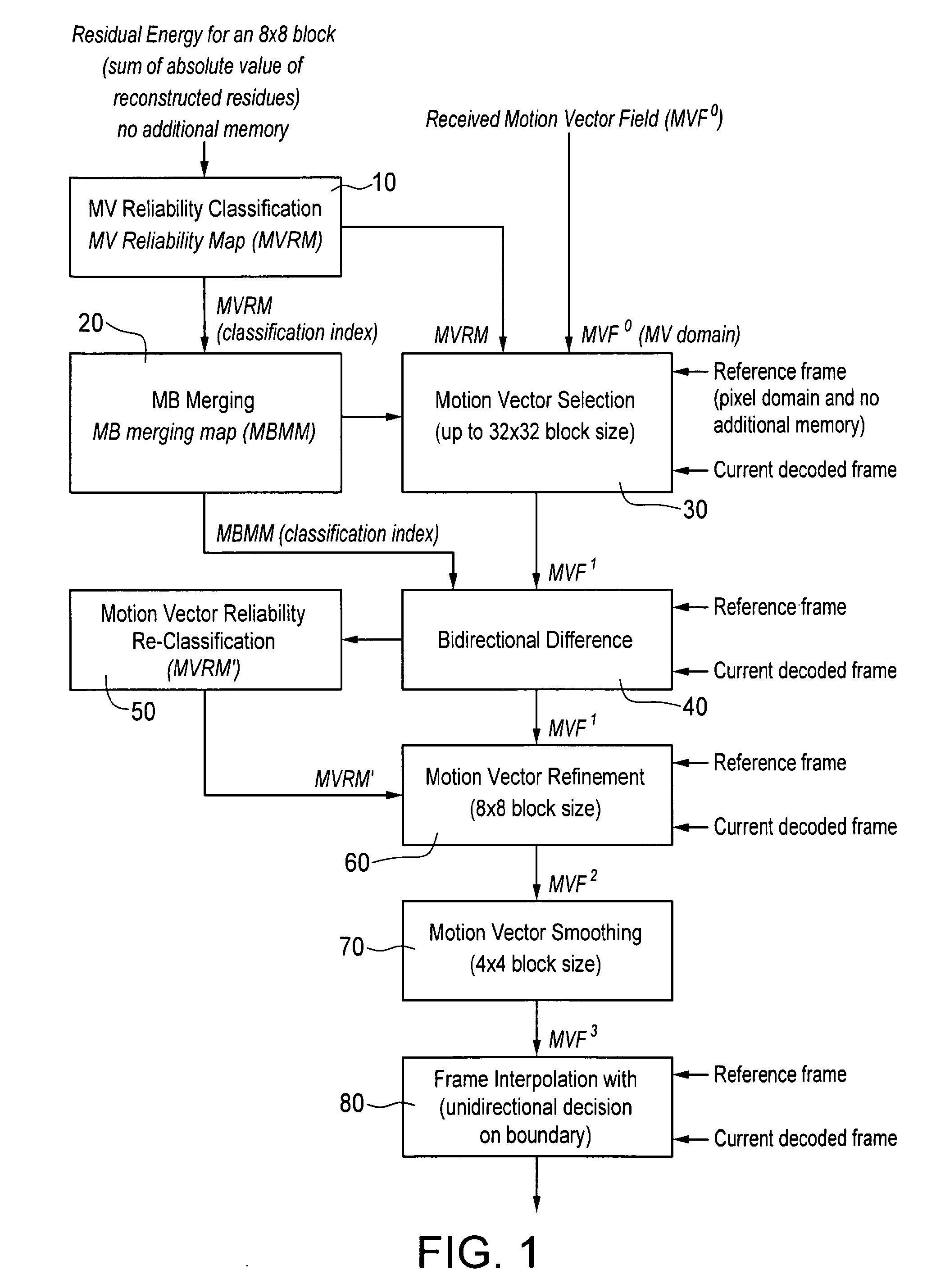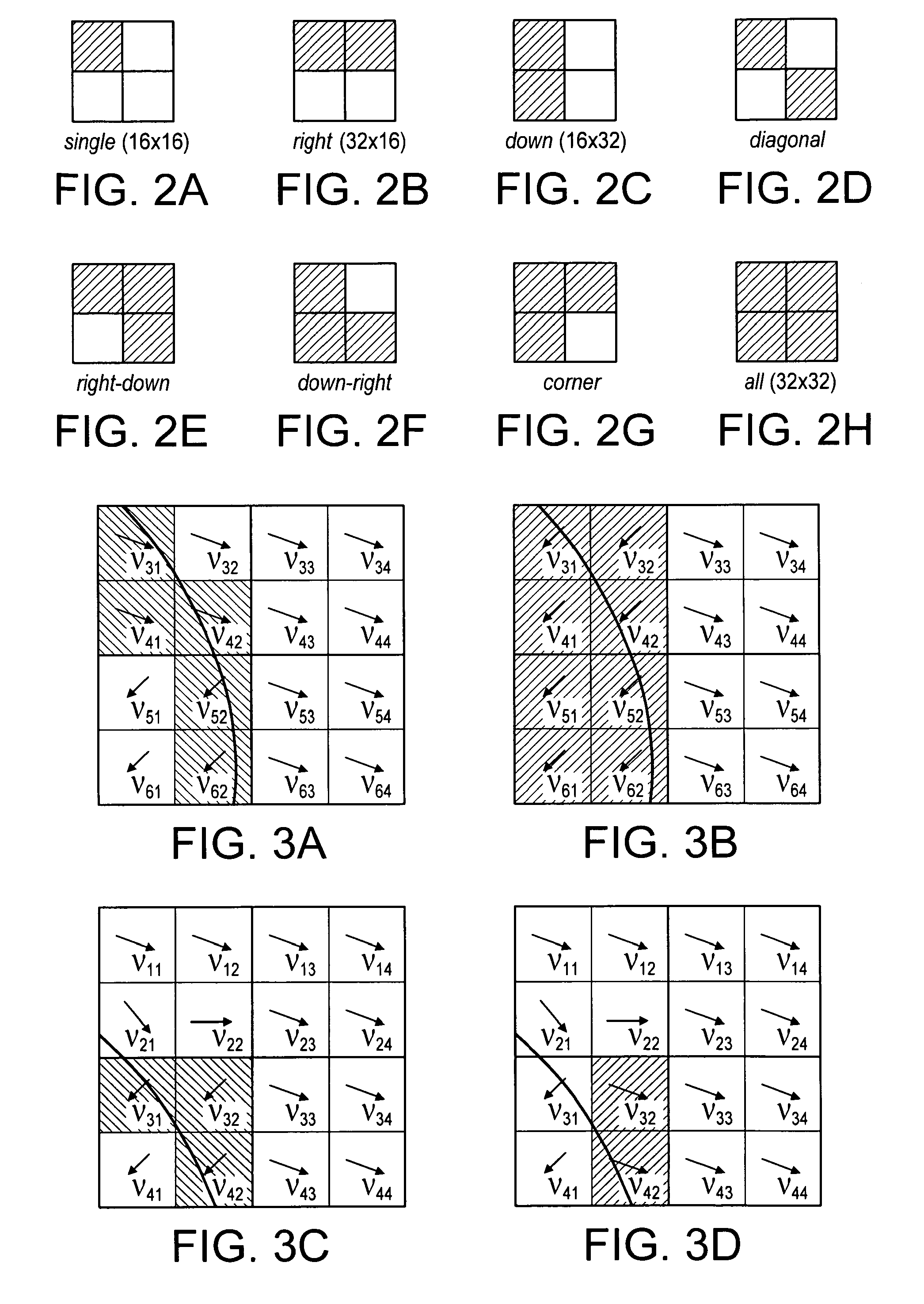Hierarchical motion vector processing method, software and devices
a motion vector and processing method technology, applied in the field of image and video coding, can solve the problems of difficult and costly coding efficiency of encoders, annoying artifacts, blockiness and ghost effects of mcfi directly using received mvs,
- Summary
- Abstract
- Description
- Claims
- Application Information
AI Technical Summary
Benefits of technology
Problems solved by technology
Method used
Image
Examples
Embodiment Construction
[0011]The invention includes methods, software and devices making use of a novel, low complexity motion vector processing algorithm. Methods, software, and devices of the invention can, for example, be used on a decoder side for MCFI or frame rate up-conversion. The methods described herein can be implemented as software in various platforms, and can be stored as code in many forms of computer readable media.
[0012]A preferred method for hierarchical motion vector processing determines reliability levels of motion vectors in video data according to residual energy levels. Macroblocks of an image frame are merged according to reliability levels of the motion vectors of their sub-blocks. A Single motion vector is selected for each merged group by minimizing the bi-directional prediction difference. Motion vectors of blocks merged in the step of merging are iteratively assigned during the MV selection process. The reliability levels are preferably determined by measure residual energy o...
PUM
 Login to View More
Login to View More Abstract
Description
Claims
Application Information
 Login to View More
Login to View More - R&D
- Intellectual Property
- Life Sciences
- Materials
- Tech Scout
- Unparalleled Data Quality
- Higher Quality Content
- 60% Fewer Hallucinations
Browse by: Latest US Patents, China's latest patents, Technical Efficacy Thesaurus, Application Domain, Technology Topic, Popular Technical Reports.
© 2025 PatSnap. All rights reserved.Legal|Privacy policy|Modern Slavery Act Transparency Statement|Sitemap|About US| Contact US: help@patsnap.com



